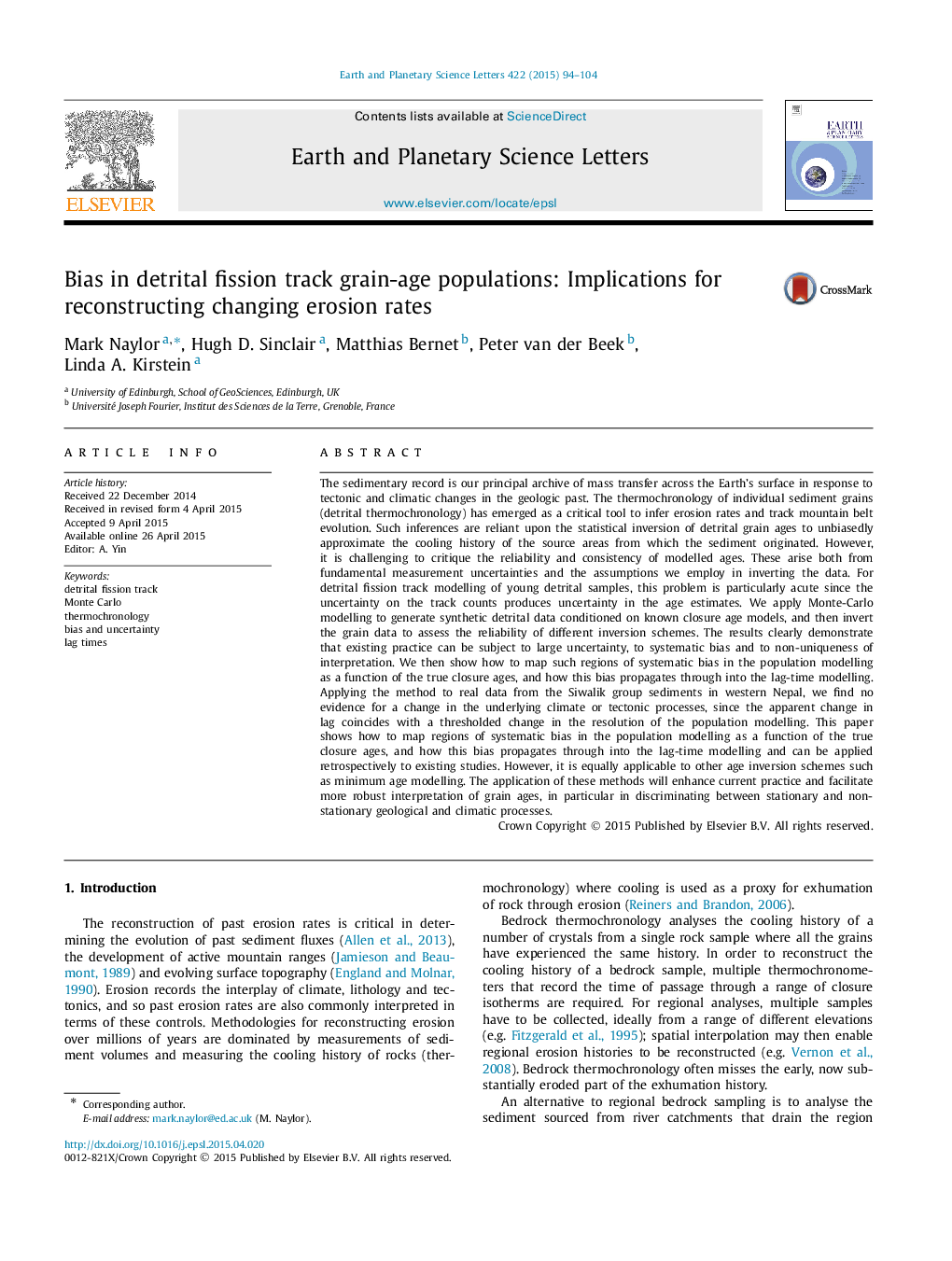| کد مقاله | کد نشریه | سال انتشار | مقاله انگلیسی | نسخه تمام متن |
|---|---|---|---|---|
| 6428332 | 1634734 | 2015 | 11 صفحه PDF | دانلود رایگان |
- Interpreting detrital fission track data: Distinguishing changing exhumation rates and inversion artefacts.
- Identification of bias in detrital fission track age dating.
- Monte-Carlo bootstrapping of true closure age synthetics to find measurable population ages.
The sedimentary record is our principal archive of mass transfer across the Earth's surface in response to tectonic and climatic changes in the geologic past. The thermochronology of individual sediment grains (detrital thermochronology) has emerged as a critical tool to infer erosion rates and track mountain belt evolution. Such inferences are reliant upon the statistical inversion of detrital grain ages to unbiasedly approximate the cooling history of the source areas from which the sediment originated. However, it is challenging to critique the reliability and consistency of modelled ages. These arise both from fundamental measurement uncertainties and the assumptions we employ in inverting the data. For detrital fission track modelling of young detrital samples, this problem is particularly acute since the uncertainty on the track counts produces uncertainty in the age estimates. We apply Monte-Carlo modelling to generate synthetic detrital data conditioned on known closure age models, and then invert the grain data to assess the reliability of different inversion schemes. The results clearly demonstrate that existing practice can be subject to large uncertainty, to systematic bias and to non-uniqueness of interpretation. We then show how to map such regions of systematic bias in the population modelling as a function of the true closure ages, and how this bias propagates through into the lag-time modelling. Applying the method to real data from the Siwalik group sediments in western Nepal, we find no evidence for a change in the underlying climate or tectonic processes, since the apparent change in lag coincides with a thresholded change in the resolution of the population modelling. This paper shows how to map regions of systematic bias in the population modelling as a function of the true closure ages, and how this bias propagates through into the lag-time modelling and can be applied retrospectively to existing studies. However, it is equally applicable to other age inversion schemes such as minimum age modelling. The application of these methods will enhance current practice and facilitate more robust interpretation of grain ages, in particular in discriminating between stationary and non-stationary geological and climatic processes.
Journal: Earth and Planetary Science Letters - Volume 422, 15 July 2015, Pages 94-104
